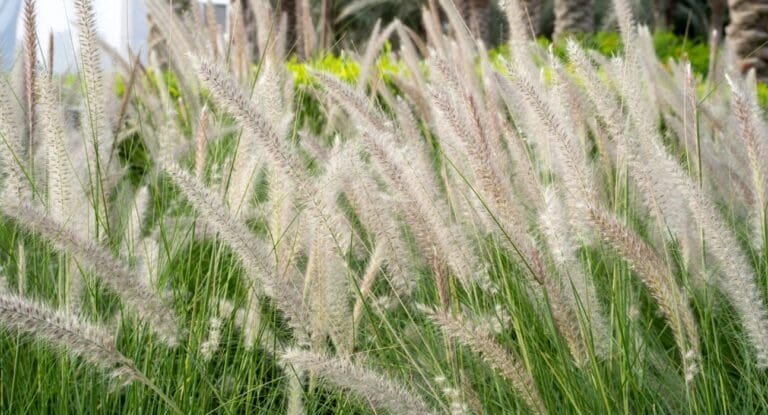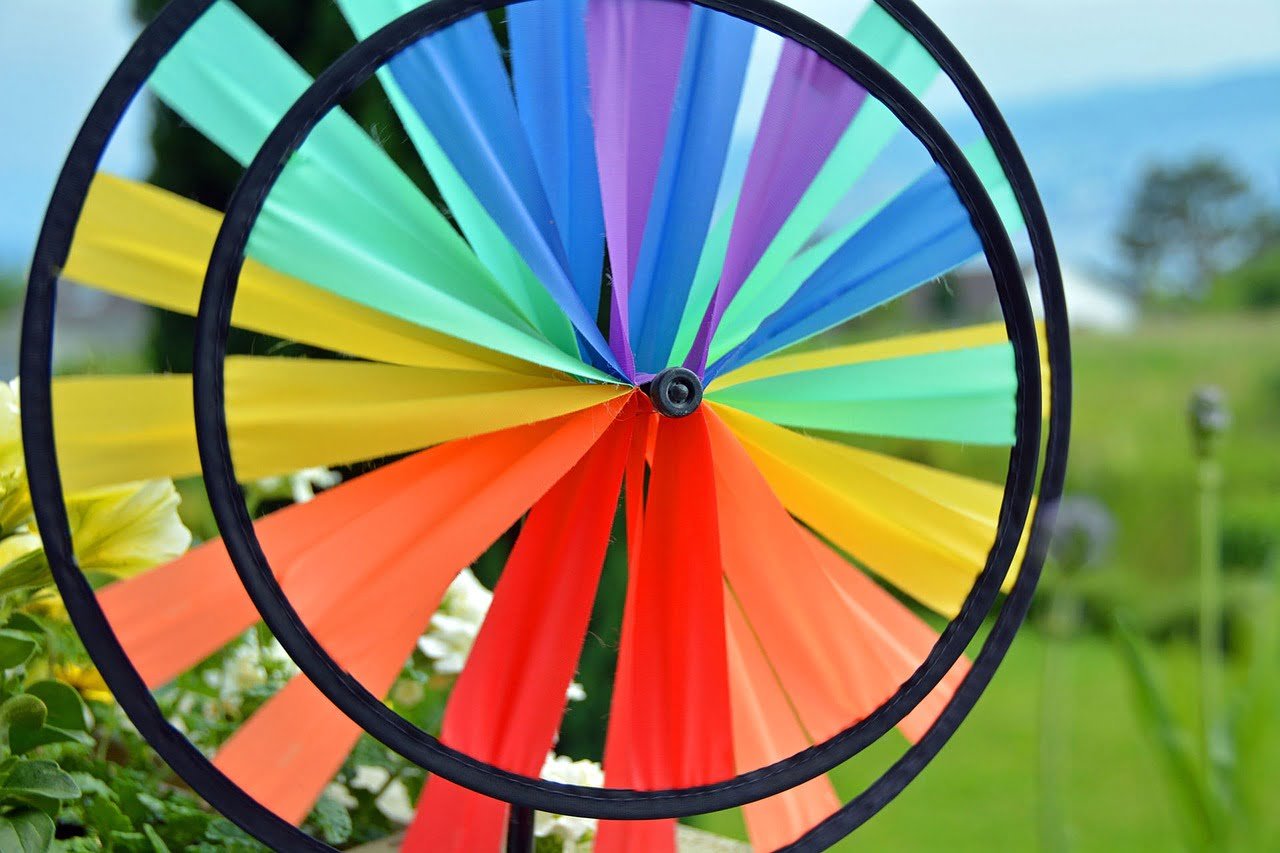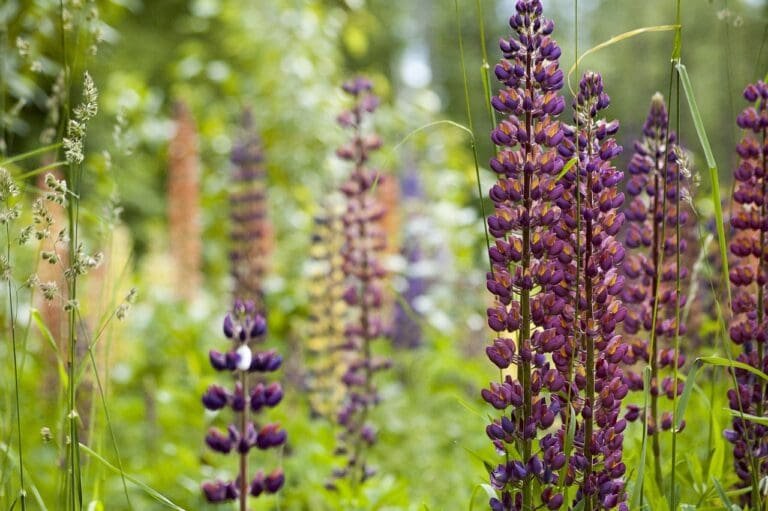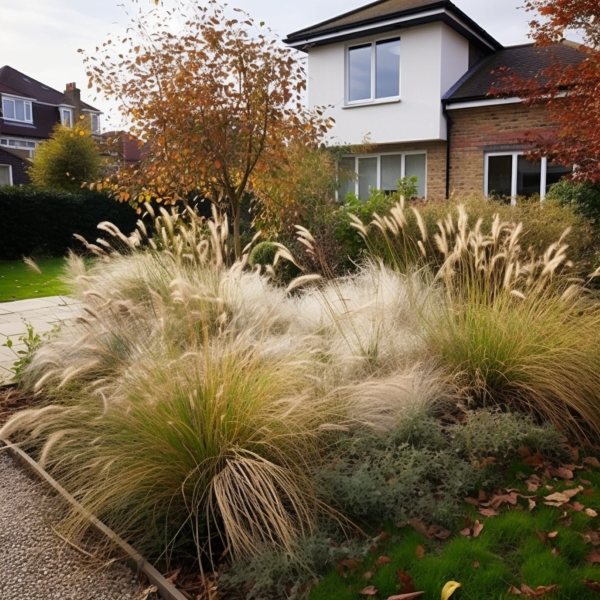Imagine stepping into a garden that awakens all of your senses, wrapping you in an enchanting world of colours, fragrances, and sounds. Whether it’s a community project, a school endeavour, or your very own private retreat, a sensory garden can be tailored to fit any space and offers a wealth of benefits.
In this blog post, we’ll explore the art of crafting a sensory garden that captivates all five senses. Plus, we’ll share some delightful plant ideas that can elevate the sensory experience in your garden.
Top 10 Sensory Garden Benefits:
1. Inspires relaxation and melts away stress
2. Awakens the five senses, sparking sensory discoveries
3. Provides a healing oasis for individuals with sensory processing disorders
4. Encourages outdoor adventure and physical activity
5. Uplifts mental health and well-being by fostering relaxation and banishing stress
6. Nurtures social connections and community involvement
7. Sharpens cognitive function and heightens attention span
8. Invites nature’s embrace and connects us to green spaces
9. Serves as a fun, educational tool for children learning about plants and the environment
10. Supports biodiversity by creating a haven for wildlife and beautifying outdoor spaces.
This post contains affiliate links which means we may make commission from any qualifying sales with no extra cost to yourself.
Designing Your Sensory Garden
When planning your sensory garden, remember to consider each of the five senses individually. Contemplate which elements will captivate each sense, weaving together a harmonious, multi-sensory experience. By incorporating a delightful mix of plants, textures, scents, sounds, and colours, you’ll create a garden that enchants and delights the senses. A well-crafted sensory garden is a rejuvenating sanctuary for people of all ages and abilities, allowing them to connect with nature and nurture their overall well-being.
Embracing the Five Senses in Your Sensory Garden
As you embark on the journey of designing your sensory garden, it’s essential to create a space that caters to each sense. Here are some tips and ideas for engaging sight, sound, smell, touch, and taste in your sensory garden:
Sight: A Visual Symphony

- Paint with colourful blooms: Incorporate flowers in a variety of hues to create a visual feast. Plant annuals, perennials, and bulbs that bloom at different times throughout the season, ensuring a vibrant display all year long.
- Play with contrast and texture: Combine plants with contrasting colours and textures to add depth and interest. Mix tall grasses with low-growing groundcovers or pair large-leaved plants with delicate foliage.
- Create captivating focal points: Integrate garden structures like pergolas, trellises, or sculptures to draw the eye and add visual intrigue. These structures also provide a backdrop for plants and a sense of depth in your garden.
- Enchant with water features: Introduce a water feature, such as a pond, fountain, or waterfall, to create movement and visual interest. The sound and motion of water also contribute to a calming and soothing atmosphere.
- Illuminate with garden lighting: Add lighting to your garden to create a magical mood and ambiance when the sun sets. Outdoor lights can highlight focal points and cast intriguing shadows, adding another layer of visual appeal.
Sound: A Symphony of Nature

- Soothe with water features: Integrate a water feature, like a fountain, waterfall, or pond, to bring the calming sound of flowing water to your garden.
- Tinkle with wind chimes: Add wind chimes to your garden for a gentle, soothing melody when the breeze blows. Choose from various styles and materials to create the perfect harmony.
- Whisper with rustling leaves: Plant trees and shrubs with leaves that rustle in the wind, such as aspen, birch, or willow. The rustling leaves create a serene and peaceful atmosphere.
- Chirp with bird songs: Attract birds by including bird feeders and birdhouses in your garden. The lively, cheerful sounds of chirping and singing will fill the air. Incorporate bird-friendly plants like sunflowers and coneflowers.
- Harmonize with outdoor instruments: Include outdoor musical instruments like a xylophone, drums, or bells for an interactive, playful element. The sound of music brings joy and uplifts the garden atmosphere.
Smell: A Fragrant Wonderland

- Aroma-rich flowers: Choose flowers with delightful fragrances, such as roses, jasmine, or lilacs. These fragrant blooms will fill the air with their intoxicating scents.
- Scented herbs: Add aromatic herbs like basil, rosemary, or lavender to your garden. Not only do these herbs smell amazing, but they also have culinary and medicinal uses.
- Fragrant foliage: Opt for plants with scented foliage, such as lemon balm, eucalyptus, or scented geraniums. Crush their leaves to release their delightful aromas.
- Seasonal scents: Plant seasonal bloomers to enjoy a variety of fragrances throughout the year. For example, include daphne for winter fragrance and gardenias for summer scent.
- Alluring night-blooming flowers: Add night-blooming flowers, like evening primrose or moonflower, to release their captivating fragrance as the sun sets and night falls.
Touch: A Textural Tapestry

- Soft and velvety foliage: Incorporate plants with soft, velvety leaves like lamb’s ear, sage, or catmint for a soothing tactile experience.
- Rough and textured plants: Select plants with rough and textured foliage, such as conifers, succulents, or ornamental grasses, to add a unique tactile dimension and create depth and contrast in your garden.
- Refreshing water features: Introduce water features like fountains or ponds for a tactile experience. The sound and movement of water can be soothing, while the sensation of water on your skin can be invigorating.
- Diverse pathways: Design pathways using different materials like pebbles, gravel, or flagstones to add a tactile element. Walking on these diverse surfaces can be stimulating and create a distinctive experience.
- Tactile garden sculptures: Incorporate garden sculptures made of various materials like metal, stone, or wood. The texture of these materials can be intriguing to touch, fostering a sense of wonder and discovery.
Taste: A Flavourful Adventure

- Edible plants: Integrate herbs, fruits, and vegetables that are safe and enjoyable to eat, such as basil, thyme, strawberries, and cherry tomatoes. These plants not only add visual interest but also offer a chance to taste fresh, organic produce.
- Edible flowers: Many flowers, like nasturtiums, pansies, or violets, are safe to eat and add unique flavours and textures to dishes. Research which flowers are safe to eat before incorporating them into your garden.
- Fruit trees: Plant fruit trees like apple, pear, or peach to provide delicious fruit and add structure to your garden. Select varieties suited for your climate and growing conditions.
- Berry bushes: Add berry bushes like blueberries, raspberries, or blackberries for a sweet, tasty treat and to attract birds and other wildlife to your garden.
- Aromatic herbs: Plant aromatic herbs such as mint, lemon balm, or lavender. These herbs smell fantastic and can be used to infuse water or tea, offering both culinary and medicinal benefits.
10 Plant Suggestions for Your Sensory Garden:
1. Lavender
2. Rosemary
3. Mint
4. Catmint
5. Thyme
6. Honeysuckle
7. Foxglove
8. Ferns
9. Sunflowers
10. Butterfly bush
Final Thoughts
A sensory garden can be a delightful addition to any outdoor space, offering visitors a unique and engaging sensory experience. By incorporating elements that engage sight, sound, smell, touch, and taste, a sensory garden can provide a relaxing and rejuvenating environment that promotes well-being and encourages visitors to connect with nature. Whether you’re creating a small sensory garden in your backyard or a larger public space, the possibilities for sensory garden design are limitless. With careful planning and attention to your visitors’ needs, you can create a beautiful and engaging sensory garden that will be cherished for years to come.
Related posts
How to Make Wildflower Seed Bombs – A Step by Step Guide
Growing Together: 10 of the Best Plants to Grow with Children in the UK
Beautifully Defined: A Guide To The Best Types of Lawn Edging



